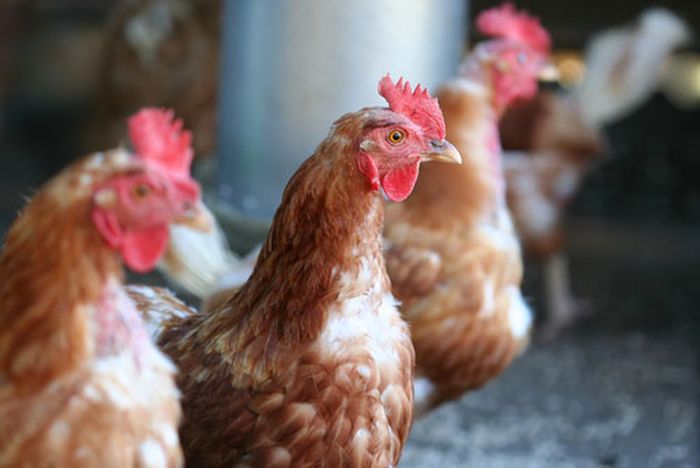H7N9 Bird Flu Virus Capable of Airborne Transmission

One strain of the H7N9 bird flu virus appears to spread easily through the air between ferrets, which are a good model for how the virus may spread in humans, a new study from China says.
Researchers tested transmission of five strains of H7N9, all taken from people who got sick with the virus.
Some ferrets were directly infected with the virus, and others were placed in cages nearby to see if they got sick simply by breathing the same air. All five strains of H7N9 were able to spread through the air between ferrets, but four of the strains did not transmit very well. However, one strain was able to spread very well — it infected 100 percent of the ferrets who were exposed to it through the air.
So far, there have been no reports of sustained human-to-human transmission with H7N9 bird flu. But the new findings add to growing evidence that the virus likely needs to undergo just a few genetic mutations to gain the ability to spread between people, said Dr. Richard Webby, a bird flu expert at St. Jude Children's Research Hospital in Memphis, Tenn., who was not involved in the new study. Webby acknowledged that this is still his "best guess." [See New Bird Flu Virus: 6 Things You Should Know].
H7N9 emerged in China in February, and so far has infected 132 people, including 43 who have died.
Researchers know that a flu virus that transmits well between humans will transmit well between ferrets, Webby said. But ferrets aren't a perfect model. For example, they don't take into account pre-existing immunity in the human population, Webby said.
The researchers called the one H7N9 strain that spread in their study "highly transmissible" between ferrets. However, Webby disagreed, pointing out that a highly transmissible virus would spread between ferrets within a short period, but in the new study, the virus took five to seven days to spread.
Sign up for the Live Science daily newsletter now
Get the world’s most fascinating discoveries delivered straight to your inbox.
"The transmission isn’t occurring rapidly," Webby said of the findings.
But the more opportunities H7N9 has to infect people, the more chances it has to undergo mutations that could make it transmissible. H7N9 is thought to transmit from birds (in particular, chickens) to people. Because the virus does not cause symptoms in chickens, it can be harder to spot infected poultry.
"The only way we have of reducing human infection and the opportunities of the virus to adapt to humans is to reduce the exposure of people to infected birds. You have to know where your infected birds are," Webby said.
"If you have a virus that’s running around that doesn’t kill the chickens, you have to be actively out there swabbing chickens," Webby said. "Finding a dead chicken is much easier than finding a virus."
Webby said that human-to-human spread of H7N9 is not inevitable. "We can't say is a sure thing," Webby said.
The outbreak appears to be dwindling this summer — there have been no reports of new H7N9 cases since the end of May.
The new study is published today (July 18) in the journal Science.
Follow Rachael Rettner @RachaelRettner. Follow LiveScience @livescience, Facebook & Google+. Original article on LiveScience.com.

Rachael is a Live Science contributor, and was a former channel editor and senior writer for Live Science between 2010 and 2022. She has a master's degree in journalism from New York University's Science, Health and Environmental Reporting Program. She also holds a B.S. in molecular biology and an M.S. in biology from the University of California, San Diego. Her work has appeared in Scienceline, The Washington Post and Scientific American.









